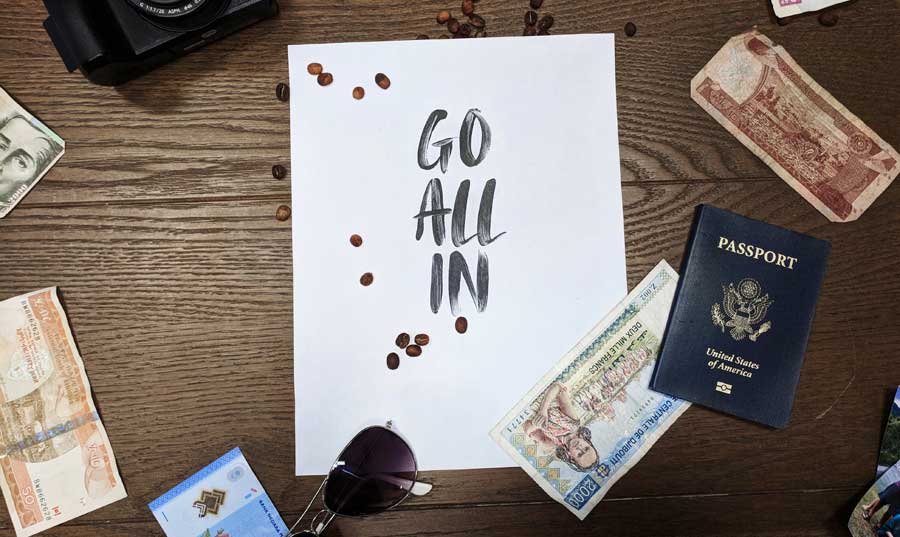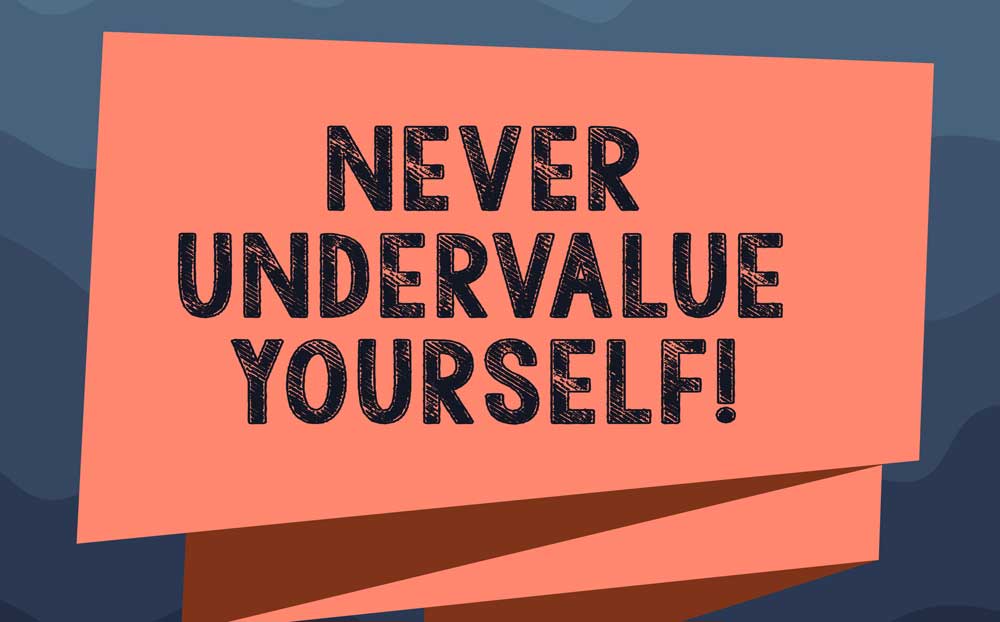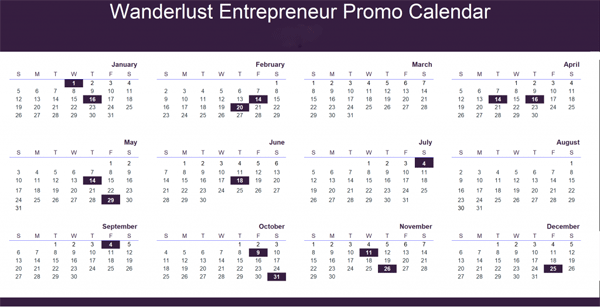I can’t tell you how often we see folks asking about how to price their retreats.
“What’s a good price for a 5-day yoga retreat?” They ask. “How much is the competition charging these days?”
“People are saying my retreat’s too expensive,” these leaders write. “Should I lower my price to make it more affordable?”
Sadly, the same people are usually complaining, “I work so hard, but I’m discouraged. I love retreats, but I never seem to make any money.”
Actually, all these questions and comments are coming from the same misguided assumptions. And all of them have the same answer:
Never pull your retreat price out of a hat!
Your price is NOT some random number that sounds good. Or a number that’s based on what others are charging. Or the amount you figure your peeps can afford. NO — it’s much more specific and concrete than that!
Your price is the sum total of your hard costs per person plus your net profit per person.
Now, I can hear you saying, “But wait a minute! How do I figure all THAT out?”
It’s really simpler than it seems. When you’re planning your retreat, instead of asking around to find out what others are charging, just sit down and tally up all your expenses, then tack on whatever you want to pay yourself. (More about paying yourself later — lots more!)
But when I say tally up all your expenses, I mean ALL of them — from room and board, entrance fees, supplies and marketing to phone charges, taxis, tips and paperclips.
And make sure the numbers make sense. Obviously, you can’t predict all the totals with 100% accuracy, but you CAN give them your best estimate.
For example, you can call the retreat center and find out how much they’re going to charge you for X number of people. You can call the transport companies and estimate figures for taxi and bus service. You can research entry fees for the various places you’ll be visiting. You can compare individual rates versus group rates. You get the idea.
As you’re adding up expenses, you’ll initially need to create TWO lists, one for costs per person (like individual room and board) and the other for costs shared by the entire group (like your plane flight, advertising, group transportation, and the cost of your co-facilitator).
In order to come up with costs per person for the group items, just divide those shared costs by the number of people you estimate will be in your group.
And what’s that number? (Pay close attention, please!)
For price calculations, use the MINIMUM number of people you’ll need to make your retreat worthwhile — the number below which you’d probably cancel the trip.
If you price for higher numbers than you get, you’re going to be losing money. Conversely, if you price for lower numbers and you get more, you’ll be making money. Always use the minimum.
So let’s say your minimum number of people is 10. If your plane flight is $1000, the cost of your flight per person will be $1000 divided by 10, or $100 per person.
Same with the other group numbers; just divide by 10 (or whatever your minimum number is) to get the cost per person. Then add up all the per-person costs, and voila — there’s your total of hard costs per person. (Save and circle that number!)

Estimating Net Profit, an Exercise in Self-Worth
Now comes the fun part! (Shhh!…and it’s often the most difficult part!) Now you get to think about what you’re going to pay yourself! Can you imagine that? YOU getting paid really well for doing what you most love to do? Well, start imagining, because that’s what this is all about!
Consider for a moment: many retreat leaders — I would venture say the majority of retreat leaders — never carefully consider what they’re going to make on their retreat.
In fact, a lot of them don’t have any idea what they’re going to make, or even what they’d like to make. Some are perfectly content to break even, at least for a while. Some even settle for losing money just to be able to serve.
It’s high time to change all that. YOU are the one who decides what you make on your retreat, nobody else. And just like any other professional who’s being of service to others, you deserve to be paid fairly and well.
So after you’ve carefully listed and added up all your costs per person, then it’s time to add your net profit (your profit after expenses).
And what should that net profit be?
If we’ve said it once, we’ve said it a thousand times: Your net profit should be a MINIMUM of $100 per person per day!
And how do you figure the net profit for your entire retreat? Simply by multiplying your net profit per person times your minimum number of people.
So if your retreat is 6 days total (including arrival and departure days), your total profit per person after expenses would be 6 days x $100 per day = $600 per person for the entire retreat. And if your minimum is 10 people, your total profit would come to $6,000 for the entire retreat.
That’s money after expenses, folks. Cash free and clear! But here’s the BIG question:
IS THAT ENOUGH?
Only you can decide. Only YOU know whether that’s enough to honor all the time, energy, work and creativity that’s gone into the making of your amazing journey. In MOST instances, it won’t be.
Look at it this way: You’ll probably spend on average 100 hours designing, doodling, marketing, traveling, teaching, counseling, presenting, herding and cleaning up after your retreat participants. When you do the math, the $6,000 profit that might have looked pretty good at first glance comes to only $60 an hour. And that’s if you worked only 100 hours. If you put in 200 hours, it would be only $30 an hour.
Would that still be worth it for you? If not, what would? $100 an hour? $200 an hour?
If you don’t like your hourly rate, decide on one you DO, then tweak your profit per person accordingly.
Once you’ve adjusted your profit per person, then multiply that amount times your minimum number of people and ask yourself whether you’d feel OK about THAT amount being your total take-home after the retreat is over.
Not that you have to feel great about it, just good enough to still go.
Remember, that’s your minimum profit. If you’ve planned your retreat well, chances are you’re going to be making a lot more. For instance, in the example above, every extra person who comes on the retreat means an extra $600 profit. If 12 people come instead of the minimum 10, your profit jumps from $6,000 to $7,200. If 15 come, it’s $9,000. If 20 come, $12,000, etc. You can see how your profit adds up fast!

Value Yourself, and Your Peeps Will, Too!
How much you charge is all up to you, and it’s a wonderful way to get clear on how much you value yourself. But take full advantage of this great opportunity. This is your chance to push the boundaries, to go beyond your comfort zone, to make sure your profit is aligned with your true worth as the creator of this amazing experience.
We’ve often found that retreat leaders — especially coaches, healers and others in the helping professions— don’t charge nearly enough for their services OR their retreats. For decades they’ve gotten so used to giving and just getting by that receiving, much less opening to receive the abundance they deserve, can be quite a challenge.
If you’re one of the many retreat leaders who find they’re dissatisfied with their retreats, not making enough money — or worse yet, barely breaking even or even losing money — then push yourself to ask for more!
Only when you truly value yourself will your peeps begin valuing you and willingly paying you what you deserve. Until then, they will sense that you don’t fully believe in and value yourself, because you’re always trying to accommodate their complaints that you’re charging too much.
But what if it’s too expensive for my people? you ask.
Rest assured, if your retreat is priced carefully and thoughtfully, it won’t be too expensive. People buy what they value, not what they can afford. (Just ask your peeps how much they spend at Starbucks each year.) If it’s priced the way we suggest, your retreat will be an amazing value!
The trick is for you to KNOW it’s an amazing value and to stand by your final price — then to SHOW that amazing value in your marketing (especially on your sales page) and in all you say and do. But that’s another subject for another time.
Last step: give your price the finishing touch!
Finally, once you’re happy with your magic number — your total costs per person plus your net profit per person — round that number up or down to the nearest 95 or 97. Why? Because numbers close to but not quite to the next hundred are the best. These are the ones that marketers and psychologists alike have repeatedly found to be the most appealing.
So if your total hard costs plus profit comes to $2310, you’d probably round your sales price down to $2295 or $2297 to make it more attractive. If your total comes to $3465, you’d probably round it up to $3495 or $3497 — a bit of a bump but not enough to deter any buyers.
There’s lots more to say about pricing your retreat. In our Retreat Blueprint Program, we even have a handy chart that automatically calculates costs and displays different prices for different numbers of people. But this should give you the basics. And if you’ve been consulting friends or just making wild guesses up to now, it could make all the difference.
With that, I wish you both luck and fun in pricing your retreat. Whatever you do, though, don’t just pull your retreat price out of a hat, OK?
Instead, remember that your sales price is the total of all your hard costs per person plus your net profit per person. And make sure your final price fully values YOU and everything you put into your awesome event. You’ll be glad you did!
Brandt Morgan, Wordcrafter Extraordinaire & Retreat Strategist @ The Retreat Blueprint Program
During his 30-year career as a professional writer and editor, Brandt has written nine successful books plus hundreds of lively and informative articles for a wide range of publications.
In addition, as a spiritual teacher and Toltec Mentor trained by don Miguel Ruiz, he has designed, marketed and facilitated dozens of his own international retreats.





Thank you, very helpful!
Thank YOU Monica! xoxox
Love this! Would you add in the intitial set up of your retreat- like your sales page banner, getting your copy edited etc, having someone put it on your website etc?
EVERYTHING that you spend money on goes into the pricing for your retreat Melissa! This is really important and people forget to do that all the time. Thanks so much for posting a comment! <3